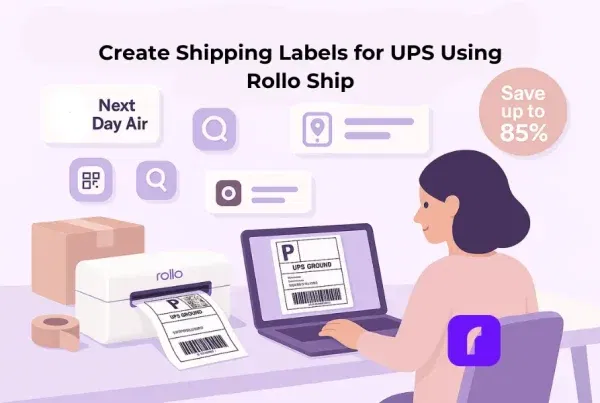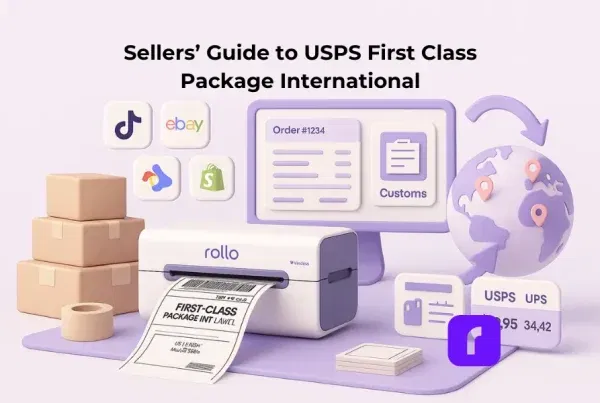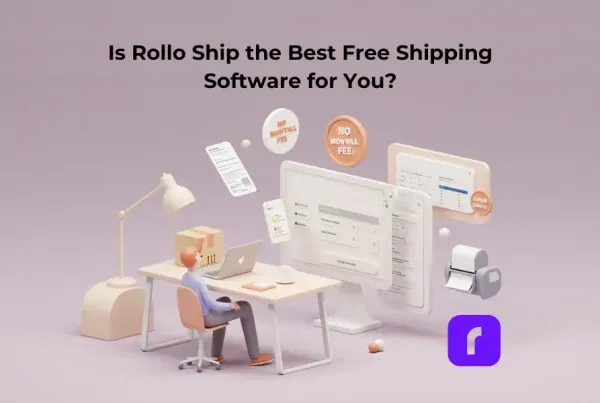The digital revolution is not limited to smartphones and computers. It extends to various parts of our lives, and one such extension is the modern marvel of inkless thermal printers. The concept of printing without ink, once a sci-fi dream, has now become a reality. The thermal printing technology revolutionized the way we look at the printing process, making it simpler, more efficient, and more environmentally friendly.
Inkless printers, as the name suggests, do not use ink cartridges or toners. Rather than relying on conventional ink, these printers leverage thermal technology to create text and graphics on specially designed thermal paper or labels. This advancement has initiated a thermal revolution in the printing industry, creating a radical shift in how we print.
Table of Contents
The Evolution of Printing and the Inkless Revolution
From manual block printing in ancient civilizations to Gutenberg’s mechanical movable type in the 15th century, and finally, to digital printing, the journey of printing technology has been remarkable. However, the introduction of ink-free printers has caused a revolution unlike any seen before.
The inkless revolution embodies a leap toward simplicity and efficiency. Traditional inkjet printers, while effective, are often complex, requiring constant attention to ink levels, cartridge replacements, and maintenance. Inkless printers eliminate these challenges, offering a fuss-free and streamlined printing experience.
What is an Inkless Printer?
An inkless printer is a distinct category of printer that generates text and images without the necessity for ink or toner cartridges. Instead, it uses thermal technology that applies heat on specially coated thermal paper or labels. This technology has paved the way for the thermal revolution in the printing industry, enhancing efficiency and reducing environmental impact.
📌 How Do Inkless Printers Work?
Their operation is remarkably innovative yet straightforward. They work on the principle of thermal printing. When thermal paper, coated with a special heat-sensitive compound, passes over the thermal print head, it reacts to the heat and changes color to form text or images.
An excellent example of this technology in action is the Rollo small label printers. With the capability of printing up to 325,000 feet of labels without any ink, Rollo printers signify a major leap in inkless printing technology. Moreover, they offer intelligent label detection, eliminating the need for manually cropping your labels. All you need to do is send the data to Rollo, and it takes care of the rest.
Do Inkless Printers Print Color?
Typically, they are used for black-and-white printing, such as receipts or shipping labels. However, technological advances have introduced Zink (Zero Ink) printers, which are capable of full-color printing. These printers use special paper embedded with color-forming elements, which are activated by heat to produce color prints.
Types of Inkless Printers
Inkless printers come in various types, from pocket-sized portable devices to larger, more robust models for industrial use. Notably, Rollo offers two variants of small-label printers – a wireless model and a USB model – operating through a USB cable connection.
The portable wireless printer is highly versatile and compatible with Mac, iPhone, iPad, Android, Windows, Chromebook, and Linux. It’s also AirPrint and WiFi certified, which means you can print directly from your phone, from any app, or any device. On the other hand, the USB model, while requiring a cord for connection, is compatible with both Mac and Windows systems.
Both models are compact enough to fit in your bag, making them perfect for on-the-go printing. These models are an emanation of the portable printer. Despite their size, they do not compromise on speed, delivering a remarkable one label per second.
Inkless Printer Pros and Cons: A Deeper Look
Pros
Cost-Effective
In the context of inkless printers, the term “cost-effective” means more than just the printer’s price tag. While the upfront cost may be higher than a regular printer, the real savings come from the elimination of consumables. With inkless printers, you won’t need to worry about constantly replacing pricey ink or toner cartridges. This lowers the total cost of ownership over the printer’s lifespan, making inkless printers a more affordable option in the long run. You can also enjoy more durable prints.
Speed
The need for speed is another reason many businesses and individuals are switching to inkless printers. These direct thermal printers, working on the principle of thermal transfer, can generate images or text much faster than ink-based printers. The speediness of the printing process can be a great asset in high-volume environments like offices, retail, or logistics, where efficiency is paramount.
Less Maintenance
The maintenance demands of traditional ink or laser printers can be tiresome and time-consuming. This includes dealing with tasks like cleaning print heads, clearing paper jams, and dealing with messy ink spills. Inkless printers sidestep these issues altogether, offering a more straightforward user experience. There’s no ink to replenish, which means less cleaning and more printing.
Compact and Portable
The advent of compact and portable inkless printers, like the Rollo label printers, has opened up a world of possibilities for mobile printing. These models are perfect for on-the-go printing, whether at a pop-up shop, a trade show, or even from the comfort of your own home. Their small size doesn’t compromise performance, delivering high-speed printing wherever you need it.
Cons
Limited to Monochrome
While inkless printers excel in many areas, they typically have a limitation when it comes to color printing. Most inkless or thermal printers are limited to black-and-white printing, which can be a drawback if you require colored labels or documents. However, advancements in Zink (Zero Ink) technology now offer color printing options without the need for ink, bridging this gap to some extent.
Print Longevity
One characteristic of inkless printers is that the printouts can fade over time, particularly if they’re exposed to heat or direct sunlight. This is because the heat-sensitive paper used in these printers responds to temperature changes. While this won’t be an issue for documents or labels meant for short-term use, it’s worth considering if you need long-lasting prints.
Thermal Paper Required
The need for special thermal paper is another factor to consider when investing in an inkless printer. Since these printers create images or text by applying heat to heat-sensitive paper, regular paper won’t work. Depending on the volume of printing you do, the cost of this specialized paper could add up. It’s crucial to factor this into your overall budget when considering an inkless printer.
In conclusion, while there are several pros and cons to using inkless printers, many find that the benefits, like cost savings, speed, and ease of maintenance, outweigh the drawbacks. As technology continues to advance, we can expect the limitations of inkless thermal printers to further decrease, making them an increasingly attractive option for many printing needs.
Benefits of Inkless Printing
Inkless printing comes with a host of benefits. It is cost-effective as it eliminates the ongoing expense of ink cartridges. Additionally, these printers are faster, quieter, and require less maintenance than conventional printers. They also take up less space, making them perfect for small workspaces.
The efficiency of Rollo’s inkless label printers is a testament to these benefits. With the ability to handle extensive printing without any ink and intelligent label detection technology, Rollo printers offer unparalleled efficiency and convenience.
The Rollo Difference: Inkless Printers vs. Traditional Printers
In an era where speed, efficiency, and sustainability hold the highest currency, choosing the right printing technology can make a world of difference. While traditional ink or laser printers have long held sway in the realm of printing, the dawn of inkless printers brings a fresh perspective brimming with distinct advantages. This is especially true when considering the game-changing capabilities of Rollo’s label printers – the perfect companion for your home-based or online-based business.

At the heart of the shift towards inkless printing is the promise of speed and simplicity. Inkless printers, as the name suggests, eliminate the need for ink or toner cartridges, thereby eliminating the costs, mess, and maintenance often associated with them. The process is streamlined, focusing on the job at hand — printing. What’s more, without the constraints of ink, these printers can churn out documents at significantly quicker speeds, catering to businesses that need large volumes of prints in shorter spans of time. This efficiency is paramount in fields such as e-commerce, logistics, or retail where large amounts of labels, such as shipping labels, need to be printed swiftly and efficiently, and packaging needs to be impeccable.
Among the ranks of inkless printers, Rollo’s label printers stand apart. These printers encapsulate the essence of modern printing — compact, fast, and fuss-free. Forget about bulky printers that commandeer your desk space. Rollo’s label printers are designed with a small footprint, seamlessly fitting into any work environment, be it a bustling office or a cozy home setup.
However, don’t let their compact size fool you. When it comes to performance, Rollo printers punch well above their weight. With a remarkable printing speed of one label per second, they make short work of any label printing task. That’s 60 labels in a minute, and 3,600 in an hour — think of the time saved and the productivity gained.
Rollo’s label printers also lend themselves perfectly to the demands of today’s connected world. They offer compatibility with a wide range of devices and platforms, from Mac, Windows, iPhone, iPad, Android, Chromebook to Linux. The ability to print from your phone, any app, any file, from any device gives you unparalleled flexibility and convenience. With the Rollo wireless model, you can even leverage the power of AirPrint and WiFi for cord-free printing.
In a nutshell, when compared to traditional printers, Rollo’s inkless printers transform the often tedious task of printing into a swift, streamlined, and sustainable process. They embody the perfect blend of modern design, cutting-edge technology, and user-friendly operation. Whether you’re an individual needing occasional label printing or a business requiring frequent high-volume printing, Rollo’s label printers deliver every time. It’s not just about printing labels, it’s about enhancing your printing experience. It’s the Rollo difference.
Print ink-free labels.
Easy. Fast. Cheap.
📌 Are Inkless Printers Cheaper?
Yes, in the long run, inkless printers can be significantly cheaper. While the initial cost of an inkless printer might be higher than a traditional inkjet or laser printer, it’s the ongoing cost that makes a difference. Inkless printers don’t require costly ink or toner replacements, which can significantly reduce operating costs over time.
The Role of Inkless Printers in Environmental Sustainability
With growing concerns about environmental sustainability, inkless printing technology shines as a beacon of green innovation. Traditional printers generate waste in the form of used cartridges and toners, which often end up in landfills, contributing to environmental pollution. On the other hand, inkless printers produce minimal waste, making them a more environmentally friendly choice.
Inkless Printer Paper
Inkless printer paper, or thermal paper, has a special coating that reacts to heat. When this paper passes through a thermal printer, the heat from the printer causes the coating to react, creating darkened areas that form images or text. The use of this paper is one of the reasons why inkless printers are more environmentally friendly since they produce less waste compared to traditional printers.

Inkless Printing and the Future of Printing Technology
As technology continues to advance, inkless printing holds immense potential. Not only does it simplify the printing process, but it also pushes the boundaries of what is possible with printing technology. With innovations like Rollo’s compact and intelligent label printers, we are witnessing just the beginning of this thermal revolution.
The ability to print vast amounts of labels without any ink, combined with intelligent label detection technology, paints a promising picture of the future of printing technology.
Common Questions About Inkless Printers
The concept of inkless printing is still new to many, and it’s natural to have questions. Some common inquiries include thermal paper’s cost-effectiveness, print quality, and the printers’ lifespan. As users discover the practicality and benefits of inkless printers, we believe they will become a staple in homes and businesses alike.
Practical Applications of Inkless Printers
In the bustling retail sector, inkless printers like Rollo’s models streamline the process of printing price tags, inventory labels, or receipts, supporting the sector’s high-paced demands. In healthcare, they enable swift printing of patient IDs or prescription labels, promoting efficiency and accuracy. At home, these printers are excellent for crafting, home businesses, or even managing household organization with clearly printed labels. This versatility of Rollo’s label printers showcases how they’ve made the task of label printing effortless and within reach for various sectors and everyday users.
Conclusion
In conclusion, the inkless printer represents a significant advancement in printing technology. With the thermal revolution paving the way for a more efficient and sustainable printing process, the future of printing is not just inkless—it’s brilliant. Whether you’re a small business owner, a teacher, a crafter, or just someone looking for a convenient and effective printing solution, the inkless printer could be the answer. It’s time to embrace the thermal revolution and step into the future of printing with inkless printers.
Follow Rollo on:
Frequently Asked Questions:
📌 Q: What is the Other Name for Inkless Printer?
💭 A: Inkless printers are also commonly referred to as thermal printers. This is because they utilize thermal technology to produce prints.
📌 Q: Do Inkless Printers Need Special Paper?
💭 A: Yes, inkless printers require special thermal paper to print. This paper is coated with a heat-sensitive material that reacts to the heat generated by the printer, forming images or text. Regular paper will not work with inkless printers as it lacks this heat-sensitive coating.




